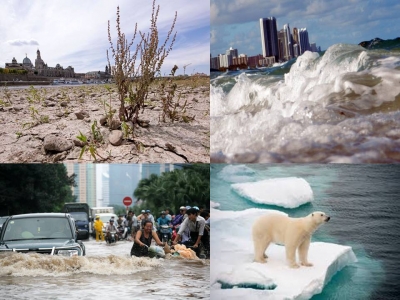
Extreme weather:
Heatwaves, droughts, heavy rain, and flooding are becoming more and more common, because of Earth’s atmosphere warming up. It may seem counter intuitive, but the increase in snowfall during winter storms may be linked to climate change.
Remember – a warmer atmosphere holds more moisture. So when the temperatures are below freezing, snowfall can break records.
Rise in sea levels:
Higher temperatures melt glaciers and ice caps. The water formed eventually flows into the ocean. Sea levels rise and areas near the coast are flooded. The causes of changes in sea level are not limited to those related to climate change. It is well known that the mean sea level has repeatedly had a large fluctuation due to the alternation of glacial and inter glacial periods for the past several hundred thousand years in the Holocene. This fluctuation of mean sea level reached about 120 m. There are also much shorter-term fluctuations in sea level, such as tide, waves and tsunamis.
Changing natural habitats:
Many animals live in special places, such as on sea ice or in coral reefs. Warmer temperatures can destroy both of these, so animals lose their home. As the Earth gets warmer, plants and animals that need to live in cold places, like on mountaintops or in the Arctic, might not have a suitable place to live. If the Earth keeps getting warmer, up to one–fourth of all the plants and animals on Earth could become extinct within 100 years. Every plant and animal plays a role in the ecosystem (for example, as a source of food, a predator, a pollinator, a source of shelter), so losing one species can affect many others.
Picture Credit : Google




